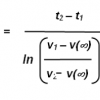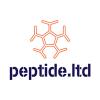http://tht.co/9-meth...-carboline.html
http://onlinelibrary...10.06725.x/full
Very curious. Trying to find dosages used, and wondering how one would go about using this if it's practical.
A bit cautious because carbolines tend to be neurotoxics, specifically for dopamine producing neurons.
Discussion?

9-me-BC Regeneration of dopaminergic neurons?
#1
Posted 12 May 2014 - 09:30 PM
#2
Posted 13 May 2014 - 01:56 AM
never heard of this one but the site you posted, very interesting. it contains a lot of regularly asked about where to buy research chems on this forum. im interested to finally see people order them from this site and report of quality....
#3
Posted 13 May 2014 - 04:18 AM
Another article:
This is a very interesting compound. Anyone have any more information on it?
#4
Posted 13 May 2014 - 07:22 PM
^ its so vague, hardly anything substantial about it. only way is to trial it yourself and report :s
#5
Posted 13 May 2014 - 07:59 PM
Very nice find. Can't find any dosage info yet.
You would really have to trust that they did the synthesis correctly, I would think. Otherwise you might get PD in a jar??
I came across this choice quote:
In addition, it stimulated the gene expression of the important dopaminergic neurotrophic factors sonic hedgehog (Shh),
http://onlinelibrary...10.06725.x/full
#6
Posted 19 July 2014 - 02:28 AM
The prospect of new dopaminergic neurons hasn't enticed anyone?
#7
Posted 20 July 2014 - 03:56 AM
#8
Posted 21 July 2014 - 04:06 AM
#9
Posted 21 July 2014 - 05:51 PM
I'm also intrested in neurogensis of dopamine receptors, but this compound & company are too new, specialy if I could get PD.
They do however have some very intresting stuff. If you are buying try a compound your already familiar with to see at least they has similar effects or if it is fake.
If you order from them let us know how it went.
#10
Posted 22 July 2014 - 02:56 AM
Nope, it's back , go for it
its not back. it closed near end of june claiming to reopen on 14th july, then it was reclosed claiming it will reopen on 21st. now, its past due date and it seems shady it will reopen. i thought the site look strange from the begining tho. cheap domain, bad design, i suspect they had legal problems hence closing it for a while now.
#11
Posted 22 July 2014 - 01:30 PM
Here is something strange, the page is up, but you can't go straight into it by just typing www.tht.co
I must agree all this seem shady.
#12
Posted 26 July 2014 - 04:36 PM
It's completely up now. How has this forum not obsessed over this chemical? Who couldn't use some more dopaminergic neurons (besides schizophrenics). I want to try it, but I'm just not sure what the dosage in a human would be.
#13
Posted 26 July 2014 - 08:03 PM
If anyone tries this and experiences noticeable help with depression and anxiety please inform me. Specifically I am trying to address depression and anxiety associated or aggravated by long term S.S.R.I. use to treat what was congenital depression. So if anyone is in the same boat and experiences anything I would like to hear about it.
#14
Posted 26 July 2014 - 09:36 PM
I wonder how this would work in conjunction with illicit substances like MDMA? Perhaps this type of thing would increase the effects of MDMA or reduce negative side effects, assuming the combined neurotoxicity doesn't fry your brain?
#15
Posted 26 July 2014 - 11:11 PM
#16
Posted 27 July 2014 - 03:31 AM
#17
Posted 27 July 2014 - 09:13 PM
#18
Posted 27 July 2014 - 09:24 PM
https://docs.google....sp=docslist_apiso we don't know what the estimated human dose is?
Someone who is not me might want to do the math.Stimulating effects on learning and memory as assessed using several learning tasks like habituation to a new environment, passive avoidance, etc. (see Venault and Chapouthier 2007 for review). The promnestic effect of this compound was demonstrated at low doses (0.3 mg/kg). Higher doses of methyl-b-carboline- 3-carboxylate showed anxiogenic and convulsive effects (1.0 and 10 mg/kg, respectively), both supposed to be maintained via GABAA receptor complex. Interestingly, opposite effects of the same agent at different doses (usually, detrimental at high doses vs. beneficial at low doses) seem to be quite common for different classes of drugs affecting brain function. For example, Assaf et al. (2011) have recently shown protective effects of tetrahydrocannabinol at a low dose against penthylenetetrazole-induced cognitive deficit,contrasting with cognitive impairments induced by this cannabinoid at higher doses.
Edited by Metagene, 27 July 2014 - 09:26 PM.
#19
Posted 27 July 2014 - 09:35 PM
#20
Posted 27 July 2014 - 09:42 PM
#21
Posted 27 July 2014 - 09:57 PM
ok. so it can induce convulsions by antagonizing gaba. this seems like a great compound, but the fact that it is a beta Carboline scares me a bit. anyone tried it out yet?
That's the wrong compound sorry. In the animal model of Parkinson's diease study the dosage was 0.105 mg/kg per day but just give me a minute to check everything out.
#22
Posted 27 July 2014 - 10:33 PM
#23
Posted 29 July 2014 - 12:56 PM
Tht is back !
@ Metagene
I guess You are reffering to the 80% increase of the Mitochondrial complex 1.
It sounded to me also harmful, but after reading again:
... activity of complex 1 in mitochondria was increased by 80%, in rats treated with 9-METHYL-β-CARBOLINE and MPP+
compared to MPP+ and Saline and to sham-operated rats
I saw that it was the effect of the 9-me-Bc and not of MPP+
Edit: I´ve found this regarding the Complex 1
Mitochondrial complex I inhibitor rotenone induces apoptosis through enhancing mitochondrial reactive oxygen species production.
http://www.ncbi.nlm....pubmed/12496265
----------
I´ve searched for the dose, but could not find out whether they used Mice or Rats.
Here´s how You calclulate it:
Human Km = 37
Mouse Km = 3
Rat Km = 6
HUMAN EQUIVALENT DOSE (HED) = Ammount used in the Study x [3 / 37] = 0.405 mg/kg
See ScienceGuys Post:
http://www.longecity...nimal-to-human/
---------
Lets use the 0.105 mg/Kg for Mouse to Human:
0.105mg/kg x (3/37) = 0.0085135 mg/kg x 80 kg ( <--- adding now the average human weight of 80 kg) = 0.681081 mg
Rat to Human:
0.105mg/kg x (6/37) = 0.017027 mg/kg x 80Kg = 1.36216 mg
Btw, for those form Germany:
You can buy/request the 9-METHYL-β-CARBOLINE as well the 7,8 dihydroxyflavone
Here:
http://www.labchem.de/index.php
Edited by Flex, 29 July 2014 - 01:12 PM.
#24
Posted 29 July 2014 - 03:15 PM
This is getting fairly interesting ![]()
Also, I am from Germany but WOW - does LabChem have the ugliest most sketchy looking website ever :D
(Not saying they aren't legit, but they really should hire a webdesigner)
Edited by chris106, 29 July 2014 - 03:17 PM.
#25
Posted 29 July 2014 - 07:03 PM
Tht is back !
@ Metagene
I guess You are reffering to the 80% increase of the Mitochondrial complex 1.
It sounded to me also harmful, but after reading again:
... activity of complex 1 in mitochondria was increased by 80%, in rats treated with 9-METHYL-β-CARBOLINE and MPP+
compared to MPP+ and Saline and to sham-operated rats
I saw that it was the effect of the 9-me-Bc and not of MPP+
Edit: I´ve found this regarding the Complex 1
Mitochondrial complex I inhibitor rotenone induces apoptosis through enhancing mitochondrial reactive oxygen species production.
http://www.ncbi.nlm....pubmed/12496265
----------
I´ve searched for the dose, but could not find out whether they used Mice or Rats.
Here´s how You calclulate it:
Human Km = 37
Mouse Km = 3
Rat Km = 6HUMAN EQUIVALENT DOSE (HED) = Ammount used in the Study x [3 / 37] = 0.405 mg/kg
See ScienceGuys Post:
http://www.longecity...nimal-to-human/
---------
Lets use the 0.105 mg/Kg for Mouse to Human:
0.105mg/kg x (3/37) = 0.0085135 mg/kg x 80 kg ( <--- adding now the average human weight of 80 kg) = 0.681081 mg
Rat to Human:
0.105mg/kg x (6/37) = 0.017027 mg/kg x 80Kg = 1.36216 mg
Btw, for those form Germany:
You can buy/request the 9-METHYL-β-CARBOLINE as well the 7,8 dihydroxyflavone
Here:
http://www.labchem.de/index.php
Okay thanks. This is what I was referring to actually:
In our experiments, the mesencephalic culture was exposed to 9-me-BC for 48 h (25 to 100 μM; higher concentrationsthe mesencephalic culture was exposed to were toxic).
I forgot the administration method was also intraperitoneal so that number doesn't help us much.
Edited by Metagene, 29 July 2014 - 07:06 PM.
#26
Posted 29 July 2014 - 07:38 PM
Hmm, Mol mass calculations.
I did this only one time, but cant say whether this data is sufficient nor if I could do this.
Will post later or tomorrow.
#27
Posted 29 July 2014 - 07:43 PM
This looks like a great addon to amp tolerance reduction.
#28
Posted 29 July 2014 - 10:28 PM
This looks like a great addon to amp tolerance reduction.
That might be a low bar.
I guess it's going to be tomorrow before I can take a test dosage. I found an example for a oral formulation consisting of 12.5mg of 9-methyl-β-carboline and 50mg so I'll set 50mg as the upper limit until we learn more.
#29
Posted 30 July 2014 - 06:51 PM
Here it is! I took a 50mg dose about an hour ago no ill effects.
I will have to post pics later.
Edited by Metagene, 30 July 2014 - 07:30 PM.
#30
Posted 30 July 2014 - 07:00 PM
Cool ![]() Please keep me updated if You notice anything
Please keep me updated if You notice anything
Also tagged with one or more of these keywords: dopamine, parkinsons, adhd, nootropic, anhedonia
12 user(s) are reading this topic
0 members, 12 guests, 0 anonymous users





















































